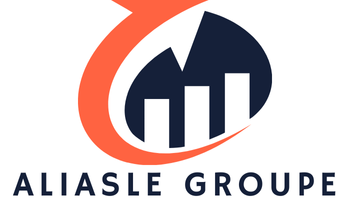Overview of Augmented Reality in Online Fashion Shopping
Augmented Reality (AR) is revolutionising the way we experience online shopping in the realm of fashion brands. By seamlessly blending digital elements with the physical world, AR allows consumers to visualise products in real-time before purchasing, thus enhancing their shopping journey. Imagine trying on a pair of shoes or seeing how a jacket fits, all from the comfort of your own home—this is the power of AR in fashion retail.
Current adoption rates of AR by fashion brands in the UK are promising, reflecting a significant shift towards tech-enhanced shopping experiences. Renowned companies are integrating AR into their platforms, enabling customers to try before they buy. This technology is not just limited to clothing but extends to accessories, potentially reducing return rates and increasing customer satisfaction.
Have you seen this : Unlocking AI Potential: Transforming UK Portfolio Management for Financial Advisors
However, consumer awareness and perception of AR in online shopping varies. While many shoppers remain excited about the prospect of using AR to make informed purchasing decisions, others are only beginning to explore its capabilities. The key for fashion brands is to educate consumers on how to effectively utilise AR tools, ultimately making online shopping an engaging and personalised experience. As adoption continues to grow, the synergy between AR and fashion retail is destined to redefine the industry landscape.
Case Studies of UK Fashion Brands Utilizing Augmented Reality
Augmented Reality (AR) is a game-changer in the fashion industry, elevating customer experiences beyond traditional shopping.
In parallel : Unlocking Success: The Role of Data Analytics in Enhancing Case Results for UK Law Firms
Brand A: Innovative Use of AR for Virtual Try-Ons
Brand A has implemented advanced AR technology to transform the way customers try on clothes virtually. This innovation enables consumers to see a virtual image of garments on their body, eliminating the guesswork typically associated with online shopping. The incorporation of AR into their fashion line has resulted in positive consumer feedback, highlighting increased convenience and better fit accuracy.
The impact on sales has been significant, with the brand reporting a noticeable uptick due to enhanced customer satisfaction. Compared to traditional shopping methods where trying-on clothes is a physical activity, AR offers a contactless, efficient, and engaging alternative. This comparison underscores AR’s potential to modernise consumer interaction by tapping into digital conveniences.
Brand B: Enhancing Customer Engagement through AR
Embracing AR, Brand B has taken customer engagement to new heights through creative marketing campaigns. By integrating interactive AR features, customers now experience more immersive and personal interactions with the brand. As a result, metrics indicate a marked increase in customer interaction and time spent exploring products. The use of AR has not only boosted interaction rates but has also fostered greater brand loyalty, illustrating AR’s strategic role in nurturing long-term consumer relationships.
Brand C: Successfully Combining AR with E-commerce Platforms
Brand C has skilfully merged AR with their e-commerce platform, offering tools that enable customers to visualise products in real-time. Integration posed challenges such as ensuring compatibility with existing website infrastructures. Despite these hurdles, once implemented, there was a discernible improvement in online shopping experiences. The benefits post-implementation are evident in higher conversion rates and customer satisfaction, demonstrating the value of using AR as an e-commerce enhancement tool.
Consumer Behavior Changes and AR’s Impact
With the rise of Augmented Reality (AR) in retail, there’s a growing interest in how this technology influences consumer behaviour. A recent study reveals that nearly 71% of shoppers would prefer to visit stores that offer AR experiences, highlighting a shift in shopping trends. This technology significantly impacts purchase decisions, as consumers are more likely to complete a purchase when they can visualise products in their own space.
Consumer confidence in buying clothing has notably increased when using AR. By providing a virtual fitting room, shoppers can see how an outfit might look on them without trying it on physically. This advancement reduces uncertainty and enhances satisfaction, encouraging more confident buying behaviour.
Additionally, AR features have redefined shopping habits by reducing return rates and improving the online shopping experience. Consumers find themselves making informed decisions, thanks to realistic product previews. As a result, they tend to spend more time exploring products virtually, leading to a more engaging shopping experience. While AR is still advancing, its impact on consumer behaviour is evident, demonstrating how technology can seamlessly blend with the shopping landscape to create better purchasing experiences.
Benefits of Augmented Reality in Fashion Retail
Augmented Reality (AR) is revolutionising fashion retail, offering substantial benefits of AR that enhance the consumer experience significantly. AR’s integration into online shopping provides a more immersive and interactive experience, allowing customers to visualise products in a real-world context. This enhances satisfaction, closing the gap between physical stores and digital platforms.
One of the primary online shopping advantages attributed to AR is its ability to increase conversion rates. By enabling customers to virtually try on clothes or accessories, AR helps dispel doubts, ensuring buyers can make better-informed decisions. This clear visual representation increases buyer confidence, often leading to higher purchase rates and, consequently, boosted sales for retailers.
Moreover, AR technology plays a crucial role in reducing product returns, which is a significant issue in online transactions. Because customers gain a more accurate preview of how an item will fit or look, there is a decrease in the likelihood of purchasing items that do not meet expectations. This not only enhances the consumer experience but also reduces logistical costs for companies.
To emphasise, the benefits of AR in fashion retail are undeniable: from enriched consumer interactions to operational efficiency in reducing returns, AR stands out as a transformative tool in the digital shopping landscape.
Challenges Faced by Brands in Implementing AR
Augmented Reality (AR), while promising transformative potential, presents particular AR implementation challenges in the fashion industry. First and foremost are the technical hurdles associated with technology integration. AR software and hardware require not only technical proficiency but also significant investment in compatible and cutting-edge infrastructure. For instance, ensuring that virtual try-on features seamlessly mirror real-world conditions comes with its own set of intricate software requirements.
Additionally, budgetary constraints concern brands wishing to integrate AR solutions into their business models. The initial costs of AR technology, coupled with ongoing maintenance and updates, demand that fashion brands carefully evaluate return on investment (ROI). Brands must ensure that these investments translate into tangible benefits, such as increased sales or enhanced customer engagement.
Market acceptance and consumer adaptation also pose significant hurdles. For AR to become successfully adopted, consumers need to be convinced of its value proposition. This requires fashion brands to not only effectively communicate the benefits of AR but also ensure an intuitive and enjoyable user experience. Education on how AR can enrich the shopping experience is paramount, as resistance or unfamiliarity from consumers can hamper widespread adoption. As a solution, gradual implementation paired with consumer-friendly interfaces can ease this transition.
Future Trends of Augmented Reality in Online Shopping
In the evolving landscape of e-commerce trends, augmented reality (AR) is poised to revolutionise how consumers interact with online retailers. As technology innovations in AR advance, we’re likely to see seamless integration between the digital and physical worlds, enhancing the shopper’s experience beyond current capabilities. Imagine virtually trying on outfits with stunning precision, transforming fitting rooms into digital experiences you can access from anywhere.
Exploring upcoming innovations, the future of AR in fashion might include hyper-realistic simulations that replicate textures and fits, minimising the guesswork in online clothes shopping. This will not only enhance consumer satisfaction but also reduce return rates, a pressing challenge for online retailers.
Predictions indicate that in the next five years, AR could redefine the fashion industry by enabling personalised shopping experiences tailored to individual preferences. As consumer expectations evolve, brands may need to adapt their engagement strategies to utilise technology innovations that provide intuitive and immersive experiences, keeping pace with these dynamic expectations.
Emerging trends suggest a shift towards more interactive platforms where shoppers can interact with products realistically before purchasing. Understanding these e-commerce trends ensures businesses remain competitive and relevant in a market increasingly driven by technological advancements and digitally savvy consumers.
Expert Opinions and Insights
In the rapidly evolving world of fashion retail, staying abreast of technological trends like Augmented Reality (AR) is crucial. Industry leaders often share valuable insights into how such innovations could shape the future. For instance, many experts predict that AR in fashion could enhance consumer engagement significantly. One prominent industry figure recently stated, “Augmented Reality is not just a gimmick; it’s revolutionising how customers interact with brands.”
Expert insights reveal that AR technologies allow consumers to visualise clothing in their own environment before making a purchase, creating a more interactive and personalised buying experience. Industry analysis shows that brands leveraging these technologies are likely to gain a competitive edge by offering enhanced value propositions.
Moreover, staying ahead of technology trends, like AR in fashion, is essential for retailers who aim to remain relevant in the market. Such foresight ensures they are equipped to meet the evolving needs of tech-savvy consumers. Embracing these advancements could also streamline operations, improve marketing strategies, and provide richer storytelling through digital platforms.
Predictions about AR’s future impact are overwhelmingly optimistic, with experts asserting its potential to transform not only shopping experiences but also brand-customer relationships. This perspective highlights the importance of integrating cutting-edge technologies to stay competitive.





